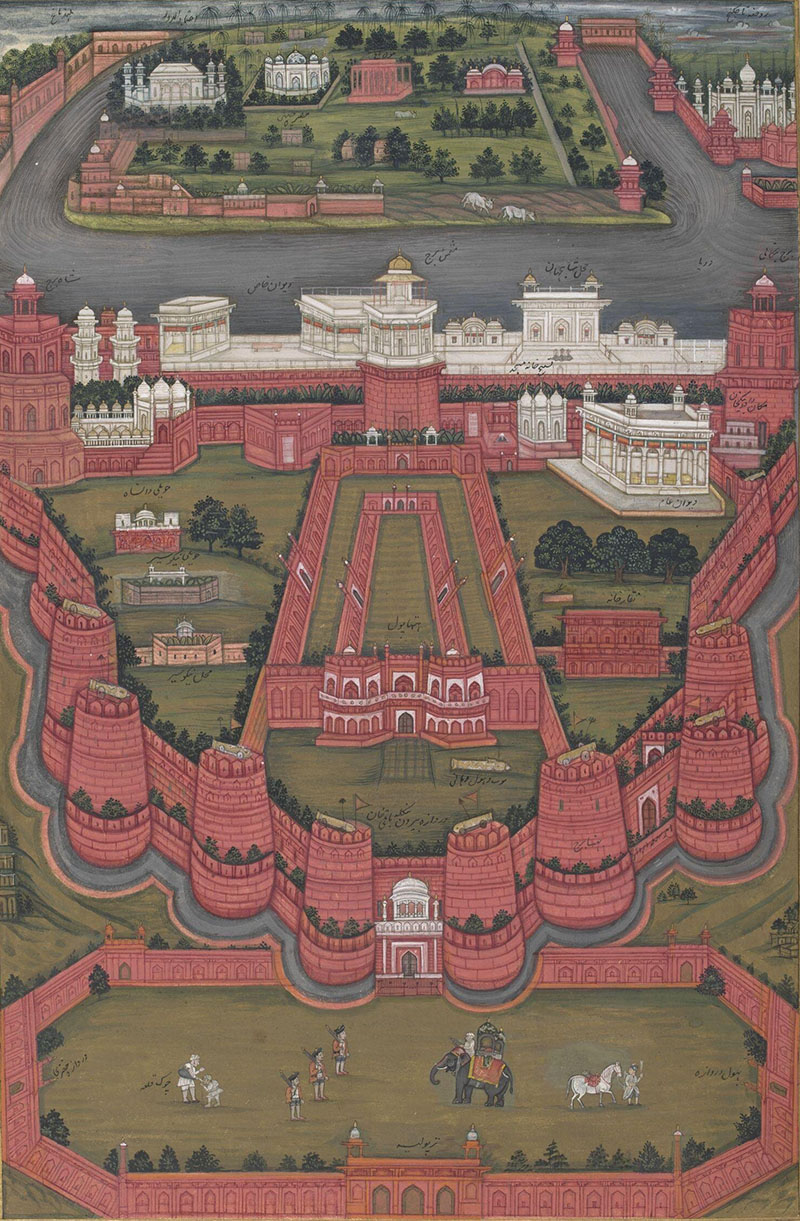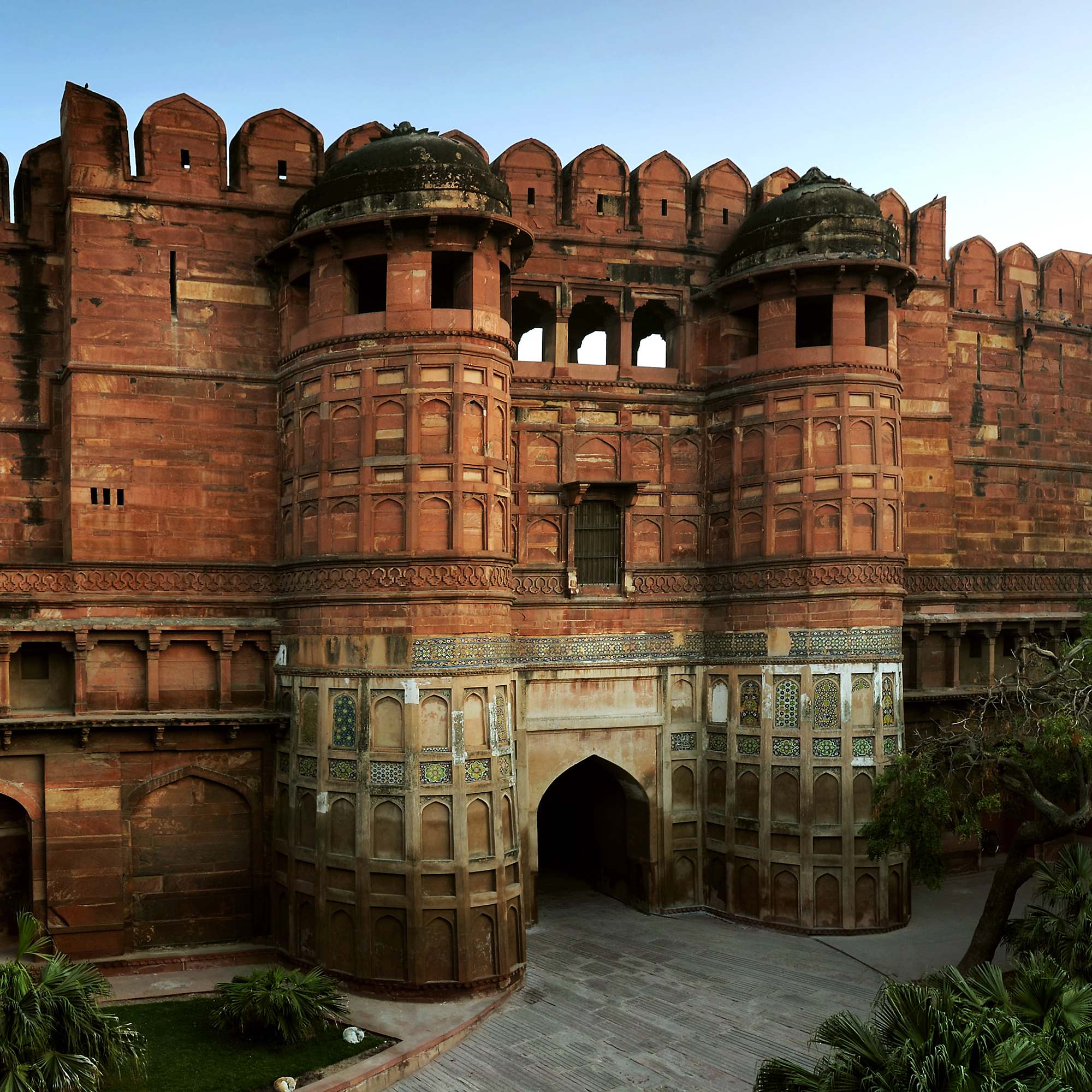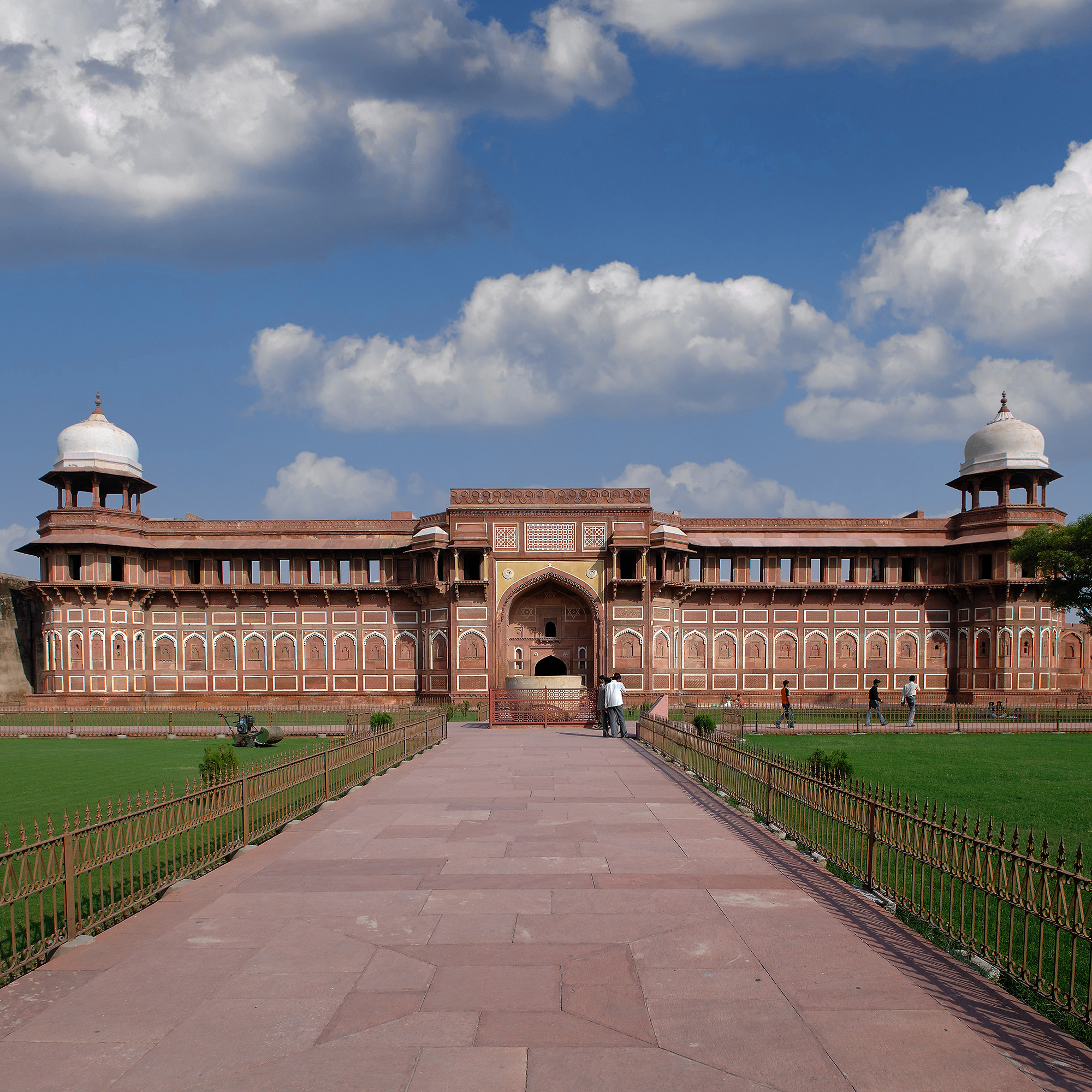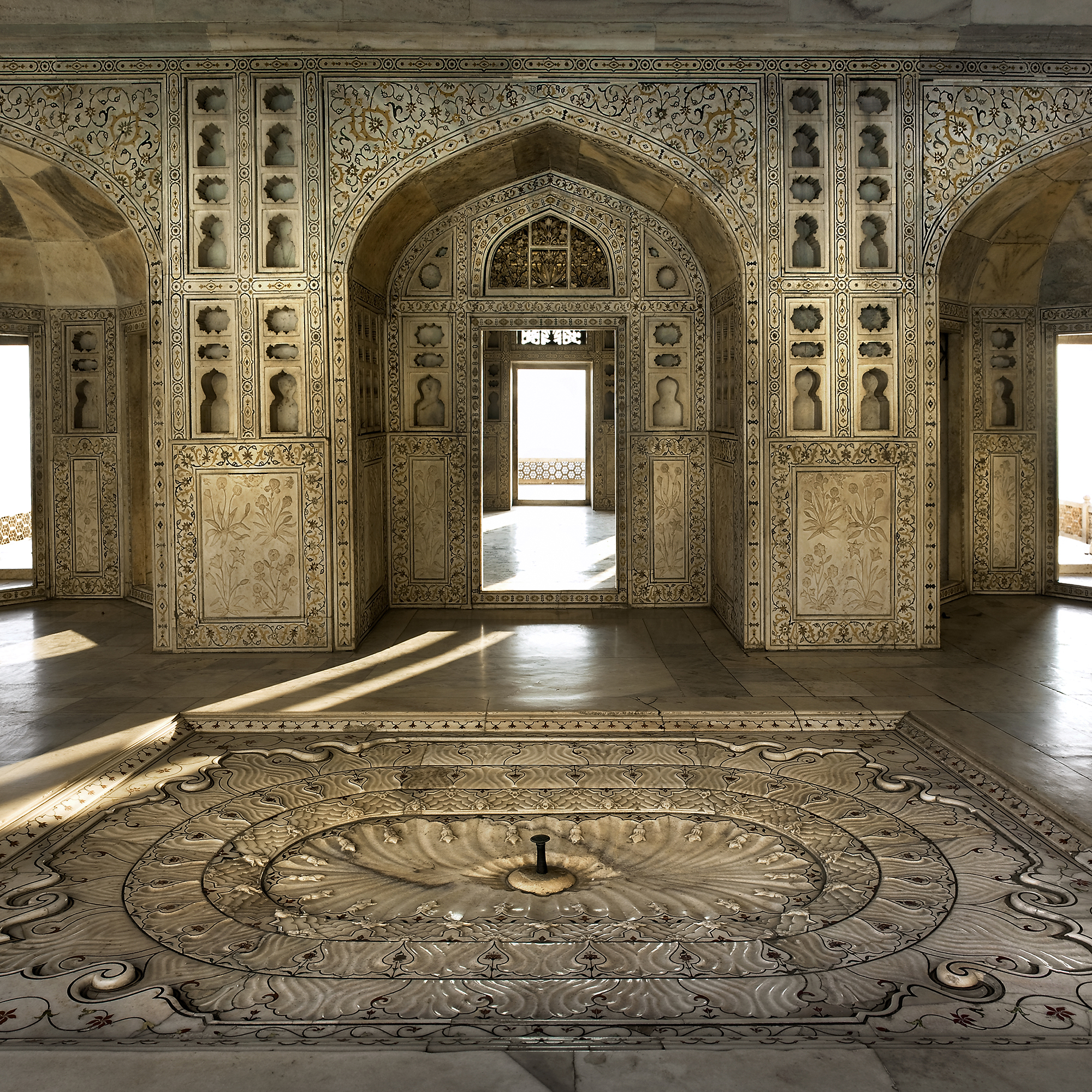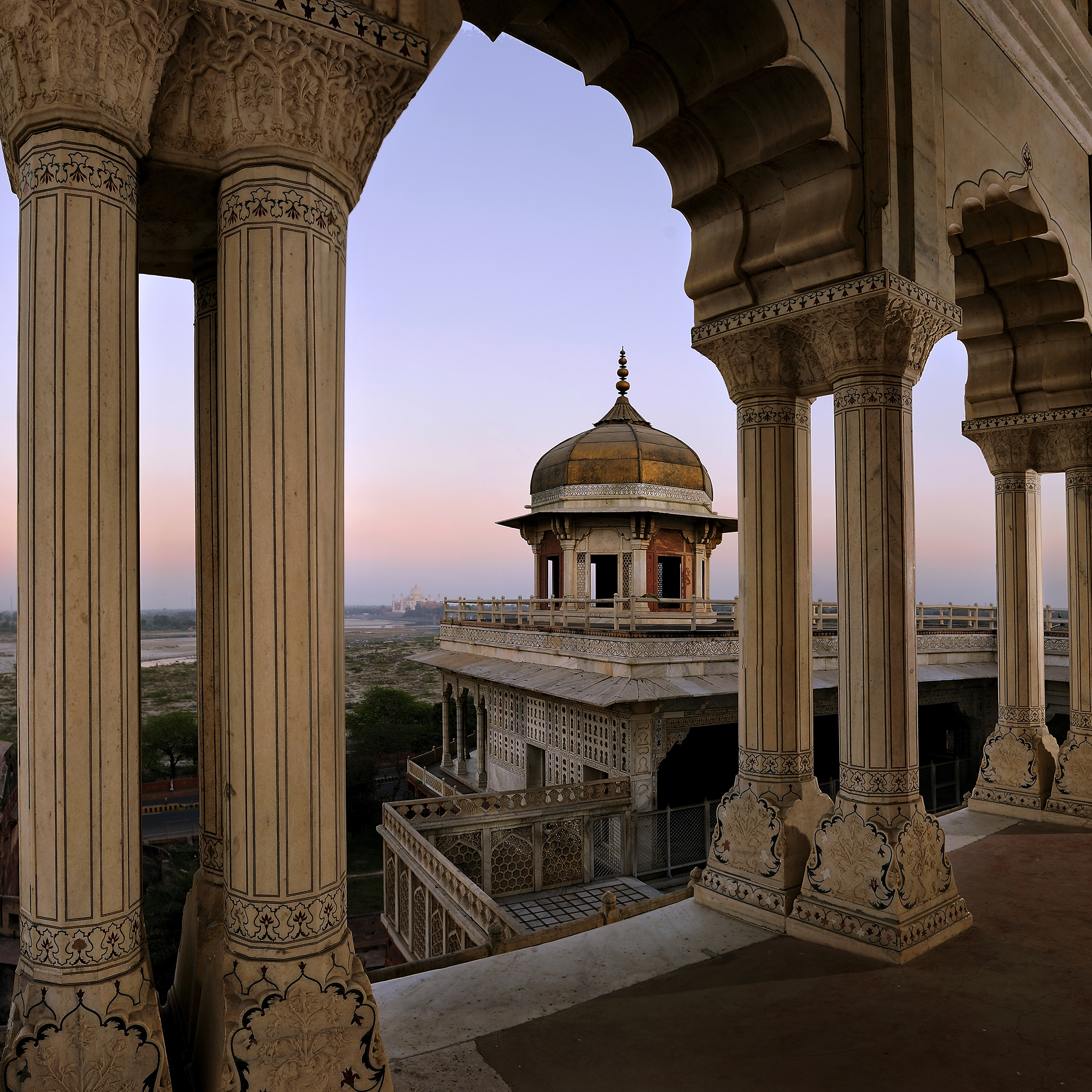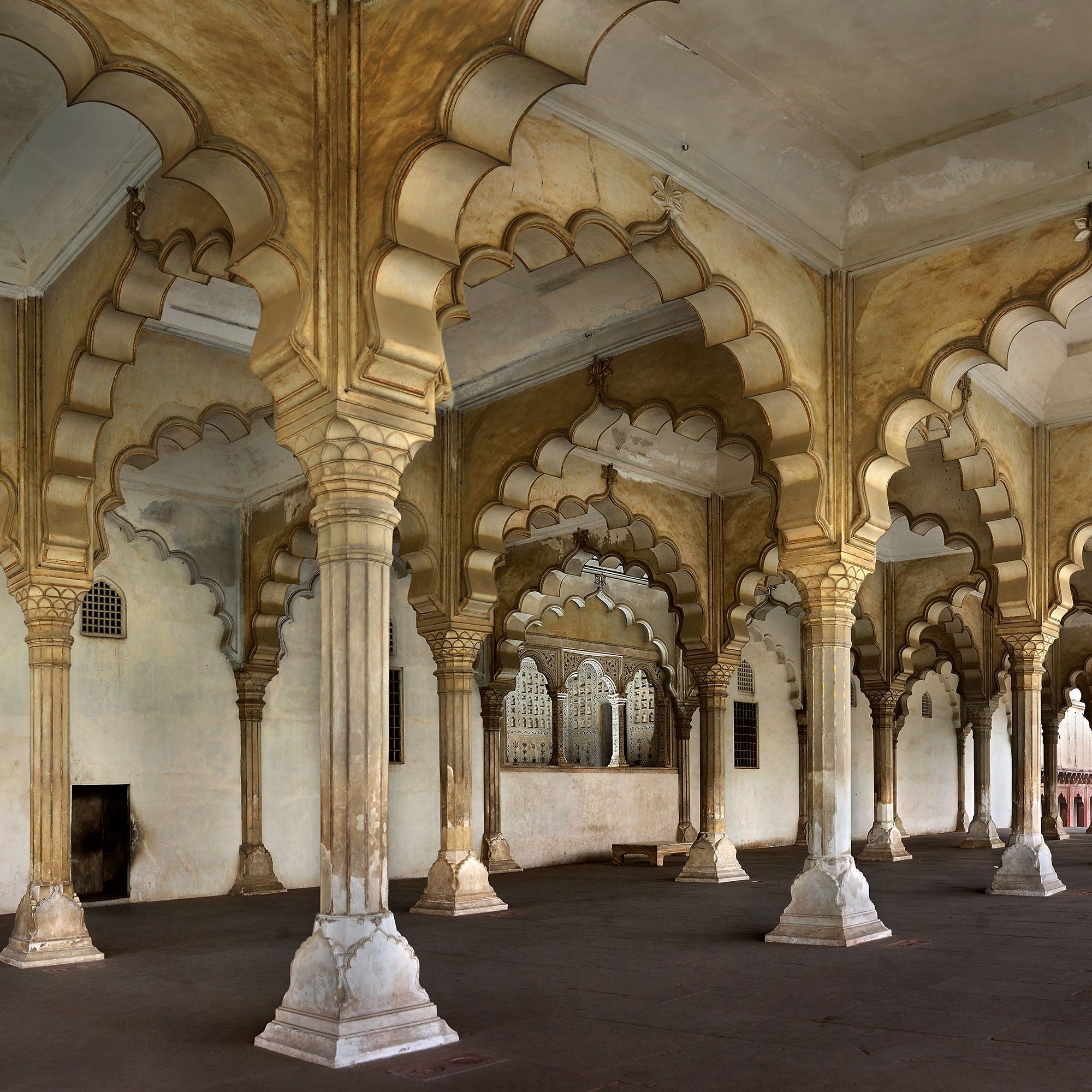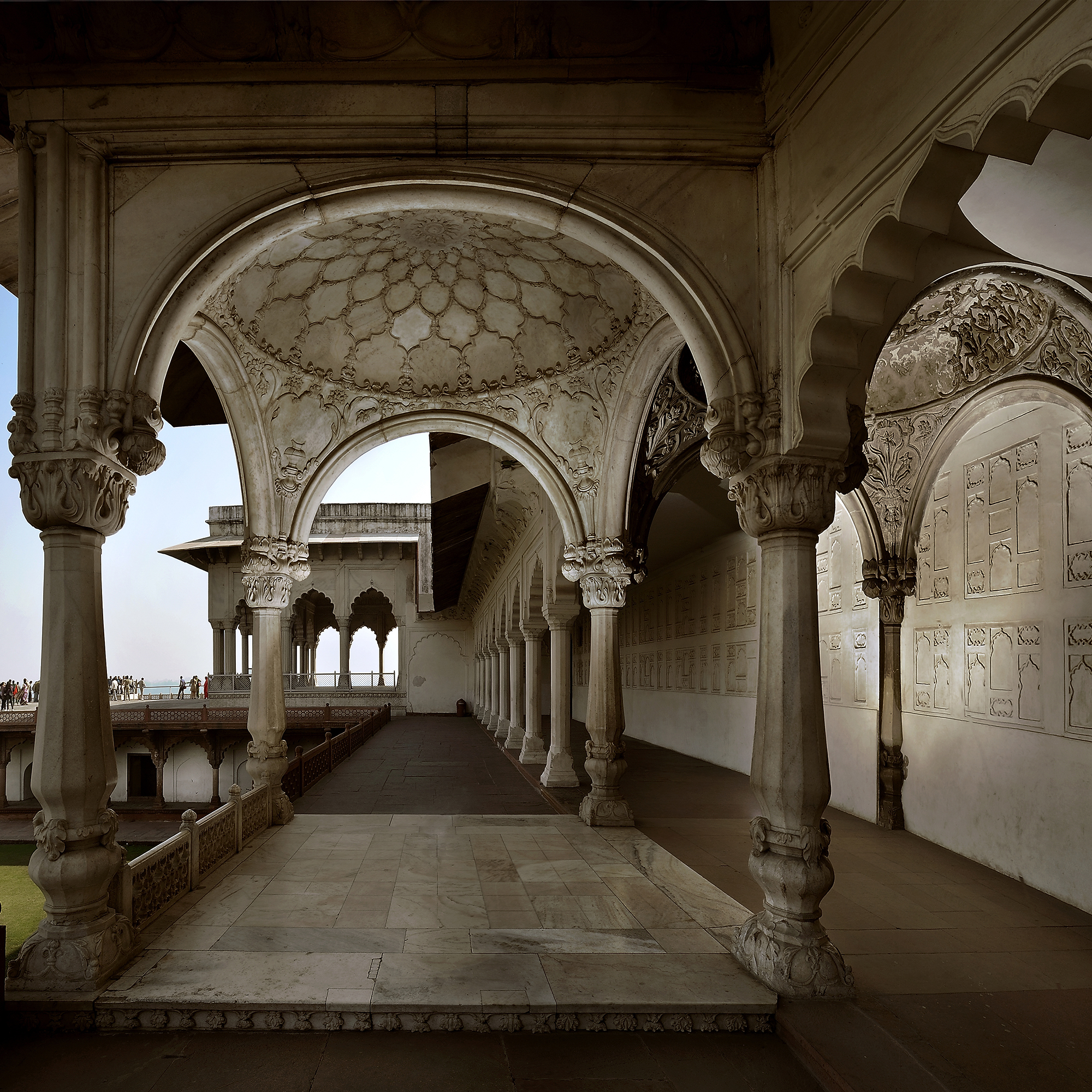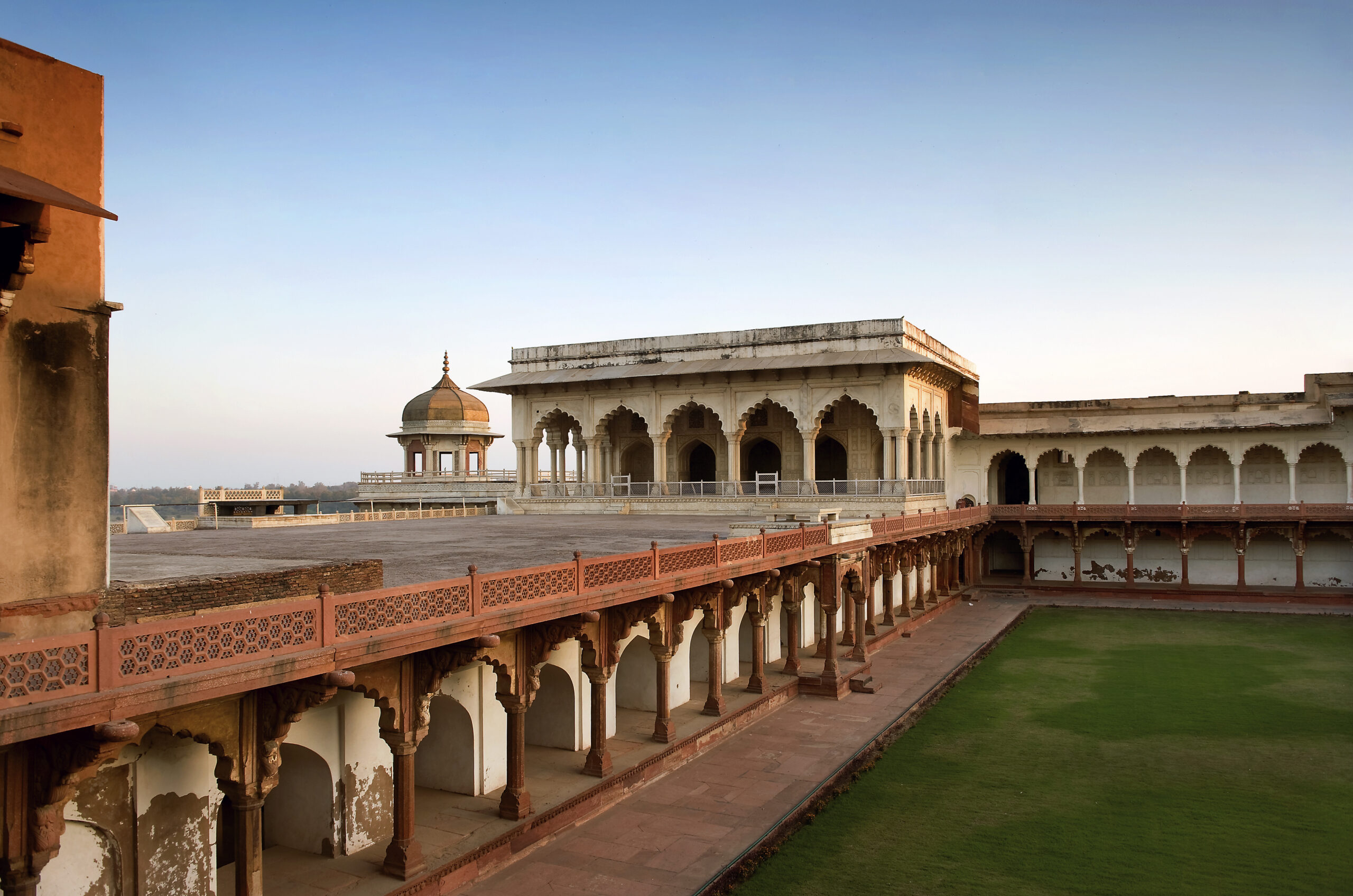ARTICLE
Agra Fort
Some sources provide information on the structures that had existed under Jahangir’s reign, which include a palace with three marble-laden chambers. The palace chambers were located near a multi-storeyed tower and pavilion named the Shah Burj, which is said to have had the Chain of Justice tied to it from outside the fort premises. European travellers of the time indicate that the private quarters of the emperor consisted of pillared halls and the throne and interiors of the chambers were replete with images of angels and the Virgin Mary — Maryam to Muslims.
Notable changes were made beginning in 1628, during the reign of Shah Jahan. He had many of the structures built by his forefathers dismantled to accommodate new marble structures. Shah Jahan preferred white marble and the changes made during his reign are characterised by intricate inlaid parchinkari or pietra dura, and stucco work. One of the first structures built under Shah Jahan was the Diwan-i-Aam, also known as chihil sutun, meaning forty-pillared hall, in the public courtyard. The east wall of the flat-roofed structure contained a jharokha, or projected window, where the emperor would sit for public assemblies. The hall also featured bulbous baluster columns — a characteristic feature of architecture under Shah Jahan. Other structures built during this time include a multi-storied quadrangular structure called the Macchi Bhawan, which also contains the riverside, terraced Diwan-i-Khas, located on the western side of the Diwan-i-Aam. On the eastern side of the complex, a large marble platform with marble pavilions contains the royal hammam or bath. The emperor’s private quarters were located on a plinth overlooking the river and towards the north of the Shah Burj, adjacent to an ornamented tower and a pavilion with an inlaid sunken bath. The entire structure is made of white marble with intricate inlaid work and is considered one of the more ornate structures in the fort complex. Located between two pavilions, the emperor’s sleeping quarters, the Khaas Mahal, also known as aramgah, meaning ‘place of rest’, is characterised by a curved bangala roof that is ornate and gilded. The personal quarters also contain a public pavilion on the northern side where the emperor could present himself to his subjects.
Apart from these living quarters, the fort houses the larger Moti Masjid and two smaller mosques. The Moti Masjid, upheld as a majestic example of buildings constructed under Shah Jahan’s patronage, with twelve-sided piers and cusped arches, was completed in 1653, eight years after Shah Jahan had shifted his capital from Agra to Shahjahanabad. The Nagina Mosque, one of the two smaller mosques, is considered by historians to have served as the emperor’s personal prayer chamber and features two aisles and the characteristic baluster columns.
Following the decline of the Mughal empire, the fort was briefly occupied by the Bharatpur Jat dynasty until the early eighteenth century, when it came under the control of the Maratha empire. The British East India Company gained control of the city in 1803. The fort was the site of a battle during the 1857 Mutiny, after which it passed into the hands of the British colonial government.
The fort was declared a UNESCO World Heritage Site in 1984. At the time of writing, the monument is under the protection of the Archaeological Survey of India and is accessible to the public. The Delhi Gate side of the fort is presently occupied by the Indian Army and used as a training base by its Parachute Brigade.
Bibliography
Asher, Catherine B. “Shah Jahan and the crystallization of Mughal style.” The New Cambridge History of India I: 4 Architecture of Mughal India. Cambridge University Press, 1992.
Asher, Catherine B. “Sub-Imperial Palaces: Power and Authority in Mughal India.” Ars Orientalis 23 (1993): 281–302. Accessed September 13, 2022. https://www.jstor.org/stable/4629454
Klingelhofer, William G. “The Jahangiri Mahal of the Agra Fort: Expression and Experience in Early Mughal Architecture.” Muqarnas 5 (1988): 153–169. Accessed June 24, 2022. http://www.jstor.org/stable/1523115?origin=JSTOR-pdf
Koch, Ebba. “The Lost Colonnade of Shah Jahan’s Bath in the Red Fort in Agra.” Mughal Art and Imperial Ideology: Collected Essays. New Delhi: Oxford University Press, 2001. 255–269.
Koch, Ebba. Mughal Architecture: An Outline of Its History and Development (1526–1858). Munich: Prestel-Verlag, 1991.




